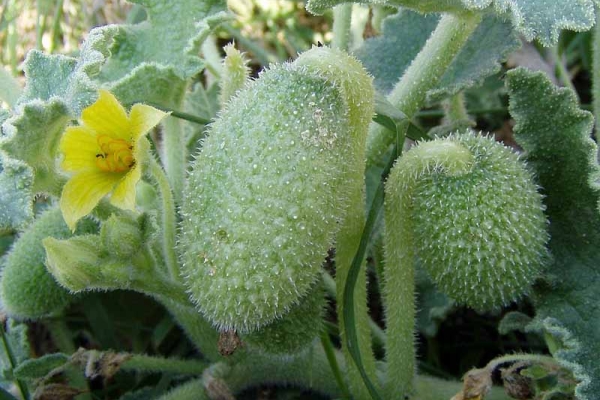Wild cucumber or prickly pear in the people it is considered a weed plant: the vine does not require special care and is able to sow itself. The long weaving stalks of annuals are similar in appearance to the above-ground portion of an ordinary cucumber and are endowed with the ability to quickly climb along the ground and trail along nearby supports. Due to active weaving and ability to grow shoots up to 6 m, wild cucumber often used in landscape design to create a hedge.
Table of contents
Description and characteristics
Wild cucumber - an annual plantbelonging to the genus of vines and the pumpkin family. It can be distinguished by the following features:
The stem is covered with stiff short hairs. In one season, creeping stems of the thickets may grow in length from 50 cm to 6 m.
Over the entire length of the vine is evenly distributed on long petioles leaves like leafy plates of edible cucumber: strongly dissected into several blades.
The lower part of the light green leaf plates is covered with short white hairs. Near the leaf plates are the antennae, with which it clings to the supports.
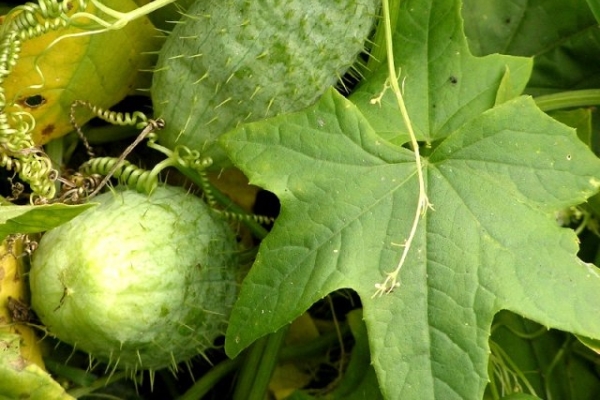
Enters the flowering phase in June and blooms until the beginning of autumn.. White-green female flowers of vines grow alone or in pairs, male - are collected in small inflorescences.
Regardless of gender flowers consist of 6 petals and are located in the leaf axil. During flowering from inflorescences pleasant sweetish aroma proceeds.
After the end of flowering on the vine, fruits are tied, from a distance resembling an ordinary cucumber, only their shape is more round, and the thorns are much longer than those of a cultivated plant.
Fallen fruits are painted in a muted green color, and on reaching maturity become brown. The skin of the fetus changes closer to maturation changes its delicate structure to hard.
If during the growing season there is a lot of rainfall, water is sprayed out of the fruit, which takes the seeds a few meters away from the mother plant.
To avoid uncontrolled self seeding fruits must be cut off before cracking.
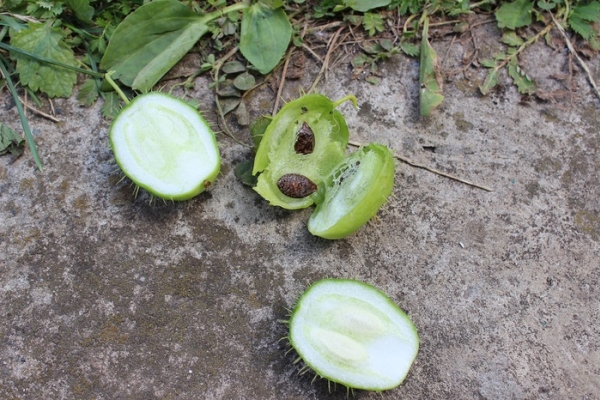
Use in traditional medicine
From dried stalks, fruits and rhizomes prepare healing broths, tinctures, powders.
- drugs from it have antibacterial, laxative and diuretic effects;
- Prickleberry-based drug is used as anthelmintic and antitumor agents;
- infusions of wild cucumber are prescribed by folk healers to treat malaria, inflammatory diseases of the liver, reduce puffiness;
- powder is used for diseases of fungal origin.
Before using the medication, it is necessary to consult a doctor.
Despite using it for many medicinal purposes, the plant is very poisonous. The skin in contact with the juice of the vine is covered with burns and wounds.
Eating fresh fruit or the above-ground green part will cause severe poisoningwhich is manifested by vomiting, headaches, diarrhea with blood, drowsiness.
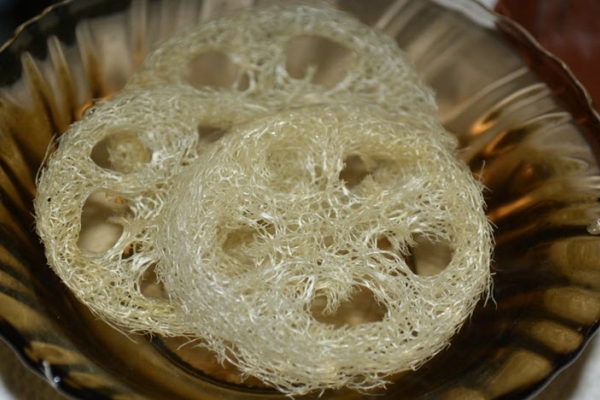
The origin of wild cucumber
Curious gardeners brought an exotic liana from North America just a century ago.
During this short time, wild cucumber moved from the European botanical gardens to the open spaces of the whole of Europe, and quickly spread throughout the continent. Now it can be found in Siberia, the Caucasus, China and even Japan..
Application at the cottage
Because of the peculiarity of creepers, it is possible to quickly grow stalks and braid the space around them, it is often used for gardening of country sites, and also for receiving honey.
In the last century, public areas were often decorated with a planting plant.Now from the plant create a hedge, they decorate balconies and terraces, as well as the walls of high premises.
Liana is planted near a special trellis, the purpose of which is to hide boxes, utility rooms, equipment from guests. It looks especially beautiful during flowering and ripening of fruits that change color.
On the use of wild cucumber at the dacha:
Difficulties in growing
Each plant in the garden requires care from the owner. For the cultivation of wild cucumber has benefited and the joy of the gardener, you need to care for the plant.
Since the vine is very unpretentious in the care and does not require the creation of special conditions, the main thing in care is to control its spread.
Among the usual manipulations, experts recommend periodically watering the vine during severe droughts. In order for the stems to grow in the right direction, they need to be coordinated.
If you do not look after a wild cucumber, it is able to capture most of the plot.
To prevent abundant self-seeding, it is recommended to pick fruits before they mature or weed up sprouting seedlings in the spring, which in their appearance are very similar to pumpkin.
To clear the area from adult vines, before winter, simply cut the stem. Digging the rhizome is not necessary - it itself dies before the onset of spring.
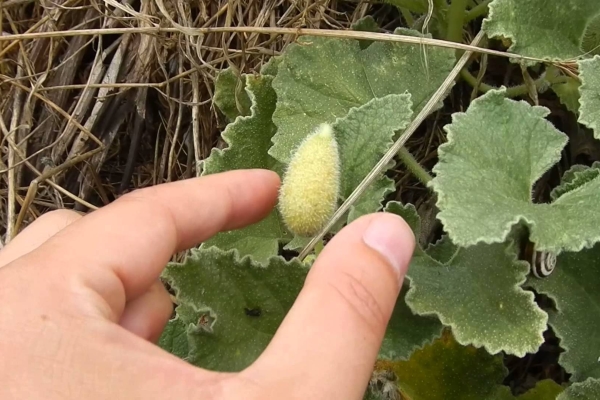
Wild cucumber - an amazing combination of beauty, healing substances and dangerous poison. An annual creeping plant is used to decorate summer cottages and to eliminate health problems.
Plant cultivation is practically devoid of any difficulties, except for controlling self-seeding and giving the desired shape.
